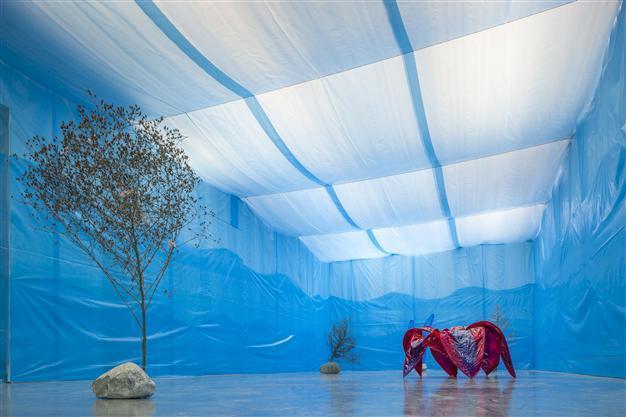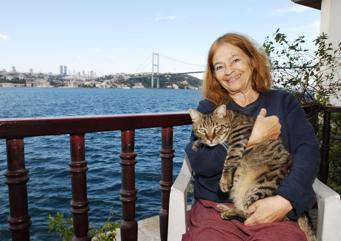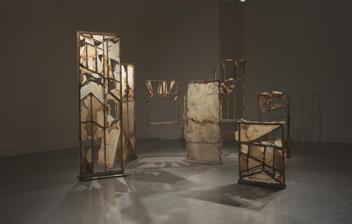Turkey’s pioneer female artist’s art and life at Arter
Hatice Utkan ISTANBUL

Füsun Onur has organized many exhibitions and is considered a pioneer contemporary artist. The exhibition at Arter is the first comprehensive solo exhibition by her.
Füsun Onur is an artist who resists time. She likes to keep her past near her and lives with it, while reflecting it onto the present times. Her current exhibition at Arter, which is curated by Emre Baykal, proves her consistency about her past and her personal life. Onur is a contemporary artist, who has done many exhibitions and is considered a pioneer contemporary artist, at time in Turkey when no one understood her. This is the first comprehensive solo exhibition by Onur.The exhibition borrows its title from Lewis Carroll’s book “Through the Looking Glass.” This has an exclusive meaning for Baykal and Onur. “Through the Looking Glass” brings together more than 40 pieces, spanning from the artist’s early career to her most recent production.
The works at the exhibition maybe new and newly created, however, some of them were not newly imagined. For example, the large installation at the entrance of Arte, Onur had previously conceived of.
 Baykal requested to turn it into a large installation. The work had been originally modelled in Styrofoam for a competition in 1972. This model was revisited and transformed into a labyrinth/space that surrounds the viewers and multiplies their image on its walls of mirror.
Baykal requested to turn it into a large installation. The work had been originally modelled in Styrofoam for a competition in 1972. This model was revisited and transformed into a labyrinth/space that surrounds the viewers and multiplies their image on its walls of mirror. Baykal researched everything about Onur.”This was a challenge,” he said, because he spent most of his days and many hours with Onur and at her house to re-discover her art. The works in the exhibition cover an era of almost 50 years committed to uninterrupted research on the potentials of space, time, rhythm and form that are inherent in simple, everyday materials. It is possible to see Onur’s body of work, from early abstract geometric drawings, to the idea of sculpture as a linear drawing in space; from three-dimensional spatial objects to installations that employ ordinary materials, such as furniture, textiles, beads, toys and so on. The viewer has the chance to discover Onur’s personal life, as Baykal has chosen to exhibit her old clothes and her old closet.
The exhibition also proves that Onur is an artist who can create to expand the boundaries of painting and sculpture, as well as to break the borders between them. The exhibition offers clues as to how the artist’s work has embraced, in the course of her production, quotidian, narrative and even autobiographical elements with the introduction of a gradually diversifying range of materials.
The powerful visuality of the exhibition continues with Ali Kazma’s video titled “Home.” Kazma reflects Onur’s house, and by doing so, the viewer has the chance to discover the place where Onur creates her art. Her artistic production spanning over 50 years plays an important role for her art.
 Onur’s artworks
Onur’s artworksOnur’s creations and works are a part of her personal life. She prefers to make an art work for her deceased cat Tekir, titled “An Elegy for Tekir,” which is an installation, while she uses her old clothes to build another installation. Previously undisplayed pieces are a part of the exhibition. A project conceived and drafted by Onur in 1993, yet remained unrealized until this day, an eight-hour-long video, which displays a pink boat and three rectangular shapes following its rudder. These items are released into the waters of the Bosphorus from the artist’s house in Kuzguncuk and persistently maintain their position against the strong winds and ever-changing currents.
One of the works that come to afore in the exhibition is a one storey installation titled “Counterpoint with Flowers,” which Onur made in 1982. The installation spread to one floor is made like an undersea world that gives the audiences a feeling of freshness.
















